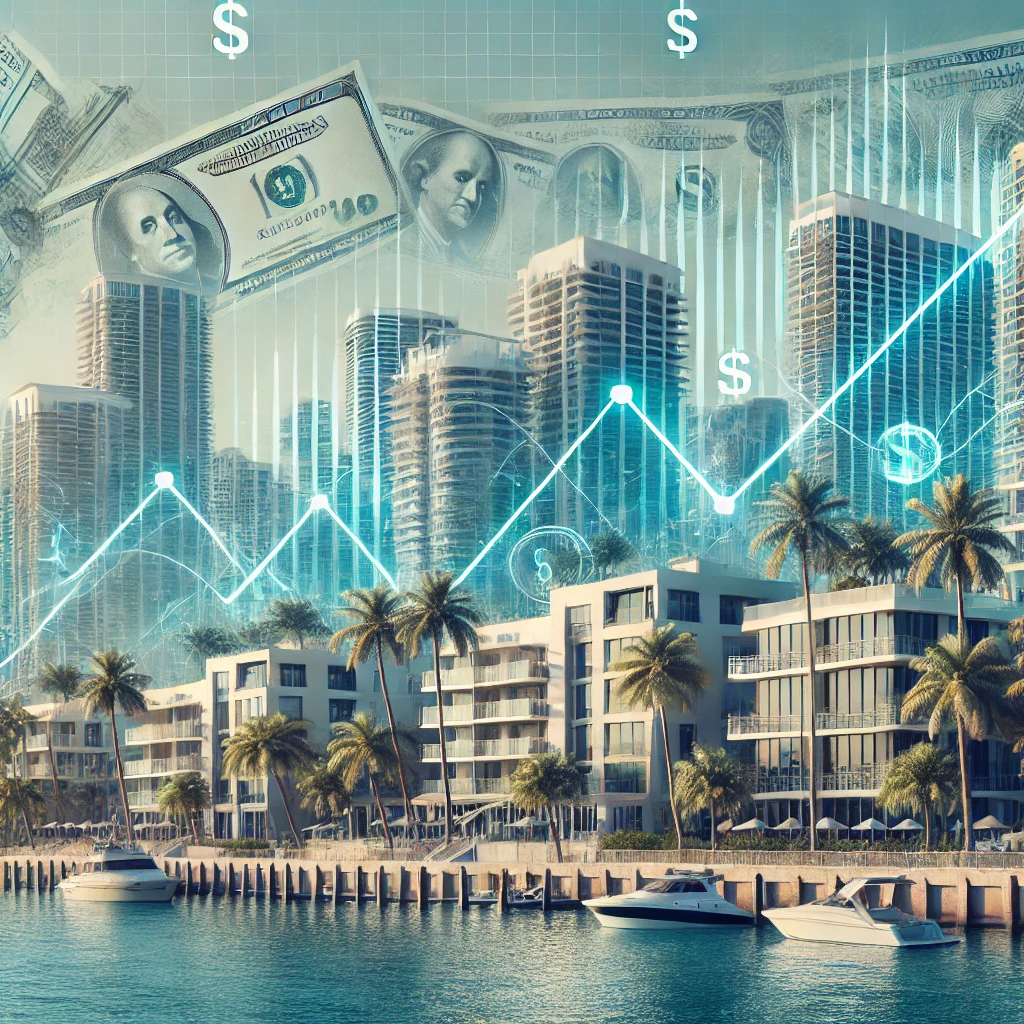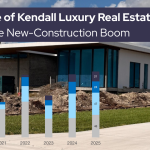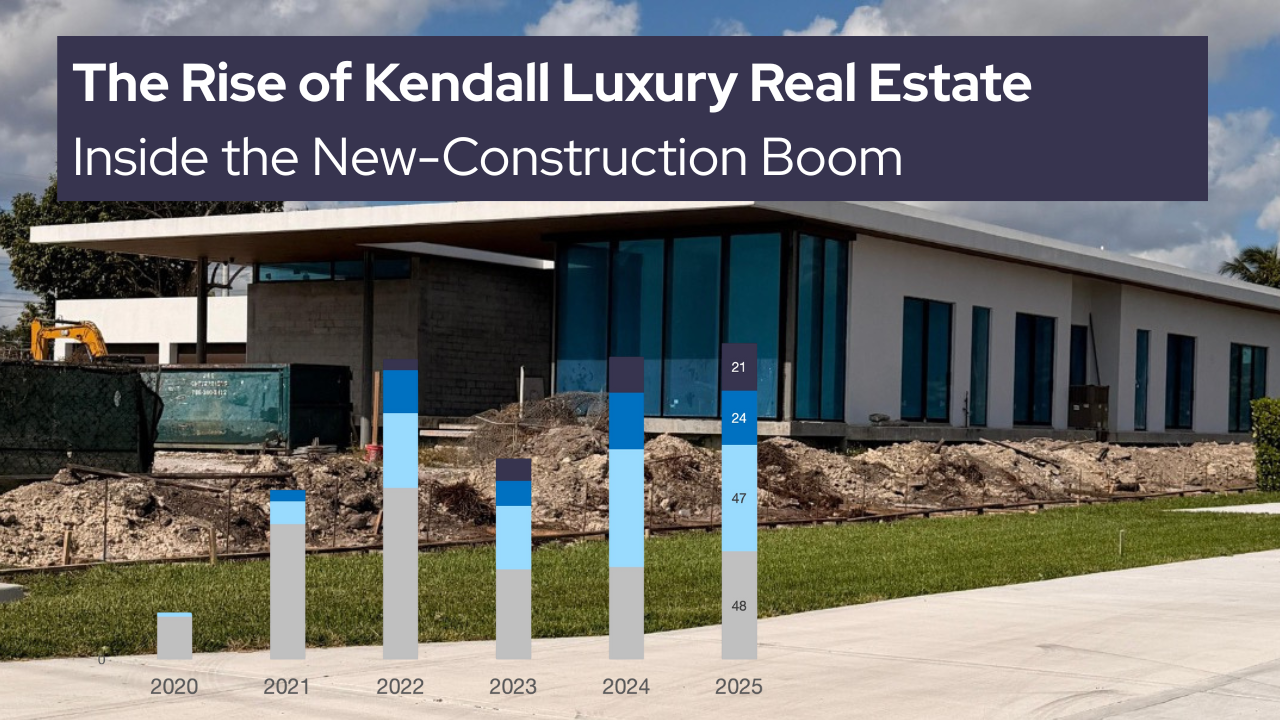
- Best of All
- Best Miami Luxury Condos
- Most popular
- Relocating to Miami
- Private Schools
- Investments
- Gated communities
- Waterfront information
- Luxury homes
- Luxury Condos
- New Construction Condos in South Florida
- Independent Pre-Construction condo reviews for Miami
- Independent Pre-Construction condo reviews for Fort Lauderdale
The Economic Forces Shaping Miami Real Estate with Dr. Andolfatto
Introduction
In this episode of the Better Decisions Podcast, we sit down with David Andolfatto, professor and chair of the economics department at the University of Miami’s Herbert Business School. Known for his deep insights into economics, David shares his perspective on everything from global trends to Miami’s local economy. Our discussion dives into his economic principles, his role in building a world-class department, and his ongoing research in monetary and fiscal policy. For our followers, the key segment of this podcast focuses on the economic forces shaping Miami’s real estate market. Tune in for an engaging conversation where even a self-professed “frustrated economist” like myself expects to gain fresh insights!
Executive Summary: The Economic Forces Shaping Miami Real Estate with Dr. Andolfatto
-
- Dr. David Andolfatto, Professor of Economics at the University of Miami, cautions that anticipated Fed rate cuts may not occur due to economic tensions. The U.S. economy is driven by entrepreneurship, but its short-term impact is limited.
- The Federal Reserve, created by Congress in 1913, manages interest rates to control inflation and support labor markets. Recent rate cuts were attributed to declining inflation and a softening job market. Further cuts seem unlikely given current inflationary pressures.
- Miami’s potential is promising, with attention needed on wealth distribution. Sea level rise is a concern, but technological solutions, like in the Netherlands, provide hope. Economic power is shifting to the U.S. South, with Texas and Florida as influential centers.
- China’s rise as a geopolitical rival is significant. Policies preventing certain foreign nationals from buying real estate near airports are favored but may be ineffective against espionage. Miami’s multiculturalism is a strength, attracting global citizens.
- Quality education in South Florida, driven by competition and migration, is credited. FIU is recognized as a rising institution. The Miami Herbert Business School is developing as an intellectual and entrepreneurial hub.
- Global conflicts could increase U.S. fiscal pressures, causing local economic impacts. Interest rates are uncertain and depend on Federal Reserve and Treasury responses. Historically, wartime rates were kept low, fueling inflation.
- Migration to Miami is influenced by perceptions of financial and personal security. High U.S. migration rates reflect institutional strength. Disparity across U.S. communities is noticeable compared to Canada.
- Providing opportunities to escape poverty is crucial. Governments must wisely spend taxpayer money on community improvements. Elected representatives’ decisions should serve broader interests.
- Inflation is a long-term threat, but a recession may be avoided. Interest rate drops are impactful, the U.S. dollar is expected to strengthen, and Miami real estate is a long-term bargain.
In summary, while facing challenges, Miami and the U.S. economy demonstrate resilience, driven by factors like entrepreneurship, institutional strength, and strategic responses to global dynamics. Wise policy decisions and long-term perspectives are key to navigating the future economic landscape.
The Federal Reserve and Monetary Policy
The Federal Reserve, commonly known as the Fed, plays a crucial role in the U.S. economy, but many find it mysterious. Formed by Congress in 1913, the Fed is tasked with ensuring financial stability, keeping inflation low, and supporting the labor market. Though powerful, the Fed’s influence is often misunderstood—such as when a rate cut is announced, which doesn’t automatically mean mortgage rates will drop.
The Impact of Fed Rate Cuts
When the Fed lowers interest rates by half a point, it raises questions about its implications for everyday individuals. The primary tool the Fed employs is managing short-term interest rates, which in turn affect the broader spectrum of interest rates across the economy. The Fed’s main goals are to keep inflation low and stable and support the labor market. If the Fed notices rising inflation, it typically raises interest rates to suppress consumer and investment demand, aiming to cool the economy and keep price pressures in check. Conversely, if the labor market shows signs of weakness, the Fed may lower rates to encourage borrowing and spending, stimulating economic activity. The recent decision to cut rates was influenced by a decrease in inflation, which peaked at unusually high levels in the summer of 2022 but has since fallen to about 2.5%. At the same time, the labor market appears to be softening. With the policy rate over 5%, the Fed saw room for a 50 basis point cut to balance these economic factors.
Future Rate Expectations
Broader Economic Perspective
Taking a wider view, I focus on how these economic dynamics impact the South Florida real estate market, which may not reflect the national or global situation. It’s essential to understand the underlying forces affecting local economies, especially in regions like Palm Beach, Fort Lauderdale, and Miami. As an economist, I prioritize the general well-being of the nation and believe in defending our institutions, which, while imperfect, have led to unprecedented levels of prosperity. My concern lies in ensuring that opportunities for success remain available for all Americans, allowing them to share in the country’s prosperity.
Global Economic Concerns
Looking globally, the economy has seen significant progress, with improved poverty rates and child mortality rates. However, political tensions, particularly involving China and Taiwan, are increasingly concerning. Historically, since the fall of the Soviet Union, the U.S. has been the dominant global superpower, allowing for large deficits due to high demand for U.S. Treasury securities. However, with China’s rise as a geopolitical rival, the U.S. may face a shifting demand for Treasury bonds and increased fiscal pressures. If tensions escalate into a conflict, the U.S. government may have to increase military spending, leading to higher deficits and potentially higher inflation and interest rates. This scenario could impact real estate markets significantly, as rising interest rates could lead to more expensive mortgages and higher living costs.
Local Implications
While global conflicts are tragic on a human level, they also have real implications for local economies. Increased government spending in response to geopolitical tensions could lead to inflation and interest rate hikes, impacting affordability in real estate markets. Despite potential challenges, a robust employment landscape may still support housing demand. Understanding these connections is crucial for navigating the economic landscape effectively.


The Economic Forces Shaping Miami Real Estate
The ongoing conversation around economic conditions raises critical questions about spending and investment. As we dive into the Miami market, a major point of discussion is the upcoming election. Many buyers and sellers express hesitance, eager to understand how the election’s outcome will influence their decisions. Specifically, they are concerned about how the new government might impact their financial prospects.
In my view, while political shifts can create uncertainty, their immediate impact on day-to-day life in Miami may be overstated. Elections often generate significant media drama, but from my experience in real estate, initial hesitations usually give way to business as usual. Historical trends show that, regardless of election results, life and economic activity often return to normal relatively quickly.
Long-Term Trends in Miami
When assessing Miami’s future, it’s essential to adopt a long-term perspective. The concept of “Long Miami” emphasizes that while short-term market fluctuations may cause temporary disruptions, the overarching trends point toward growth. The city is witnessing positive migration, entrepreneurial ventures, and a balance between wealth and opportunity. In the last few years, approximately a trillion dollars has migrated from high-cost states like New York and California to Florida, primarily benefiting Miami.
This influx is bolstered by new businesses and significant investments from hedge funds and other institutions. As a result, Miami’s economic landscape is evolving, suggesting promising prospects for the future. Importantly, the city’s multicultural environment fosters a unique global citizen psychology that supports a vibrant community.
Regional and Global Economic Dynamics
From an economic standpoint, Miami is poised for growth, but it’s also essential to consider broader regional dynamics. The power within the United States has been shifting southward, with Florida and Texas emerging as new centers of influence. This migration of wealth could revitalize traditional industrial areas in the U.S. as well.
Internationally, the return of economic powerhouses like China poses both challenges and opportunities. While it’s crucial to acknowledge the rise of these global players, the U.S. must also focus on building reciprocal relationships, especially concerning real estate regulations. The recent legislation restricting property purchases by certain foreign nationals highlights growing concerns around national security, but it also emphasizes the need for a balanced approach that respects the diversity and globalism that define Miami.
Overall, Miami’s future is bright, supported by a robust local economy, strong educational institutions, and an ever-evolving global landscape. It’s an exciting time to engage with the city’s growth and the opportunities it presents.
Schedule a Meeting with David
Would you like to discuss this podcast on the Economic Forces Shaping Miami Real Estate or do you have a question about selling or buying Miami real estate. Call me at 305.508.0899 or schedule a meeting below.
FAQ
These are the most commonly asked Google Real Estate Related questions
1. What are the Current Best New Condos in Miami?
If you want to hear in more details our opinions on the best new Miami new construction condos. Please read this article:Best New Construction Condos 2022-2023.
2. What is the best New Construction Condo in Fort Lauderdale?
In our opinion, the Residences at Pier Sixty-six are certainly the most interesting and unique. Already well underway this 32 Acre project will be home to the first of its kind Marina where owners will be able to anchor up vessels up to a staggering 400 ft! For specifics of this project see our independent review of this project.
3. How can I compare the new luxury construction Condos to the best existing Luxury Condos in Miami?
Our Best Luxury Condos in Miami article will prove to be very useful to those looking to compare the existing to the new. You may also want to watch this video which shows the performance of the best Condos in Miami over the last 15 years!
Please fill in your details and David Siddons will contact you
- Get our Newsletter
- Subscribe
- No Thanks
Get the latest news from Miami Real Estate News
Edit Search
Recomend this to a friend, just enter their email below.
 COMPARE WITH CONDOGEEKS
COMPARE WITH CONDOGEEKS








































